This is the first part of a series looking at the different styles of Boulder problems across the 2024 IFSC Boulder World Cup.
The 2024 season was dominated by the Olympics, where the IFSC created guidelines for the different styles of boulder problems for the Boulder&Lead format. They specified the styles for the four boulder problems were:
- Technical or balance,
- Physical or powerful,
- Electric or Physical-Coordination, and
- Coordination.
With two out of four of the different styles being dynamic, we were interested in what different styles there are in the Boulder World Cups where they do not have this guidance.
The Boulder & Lead format added an extra zone, so there were three scoring holds on each boulder: the low zone worth 5 points, the high zone worth 10 points, and the top worth 25. While not every section of the boulder problem had to have the same style, the style for the climb needed to be consistent.
Previous boulder style analysis has been limited in scope. In 2021, Claudia Augste, Paulin Sponar, and Marvin Winkler looked at the 2017-2018 Boulder World Cup semi-final and final problems, splitting each climb by the zone and top scoring holds into start-to-zone and zone-to-top sections. They classified the style using only one variable based on the hardest move: dyno, volume, crimp, slab, or mantle.

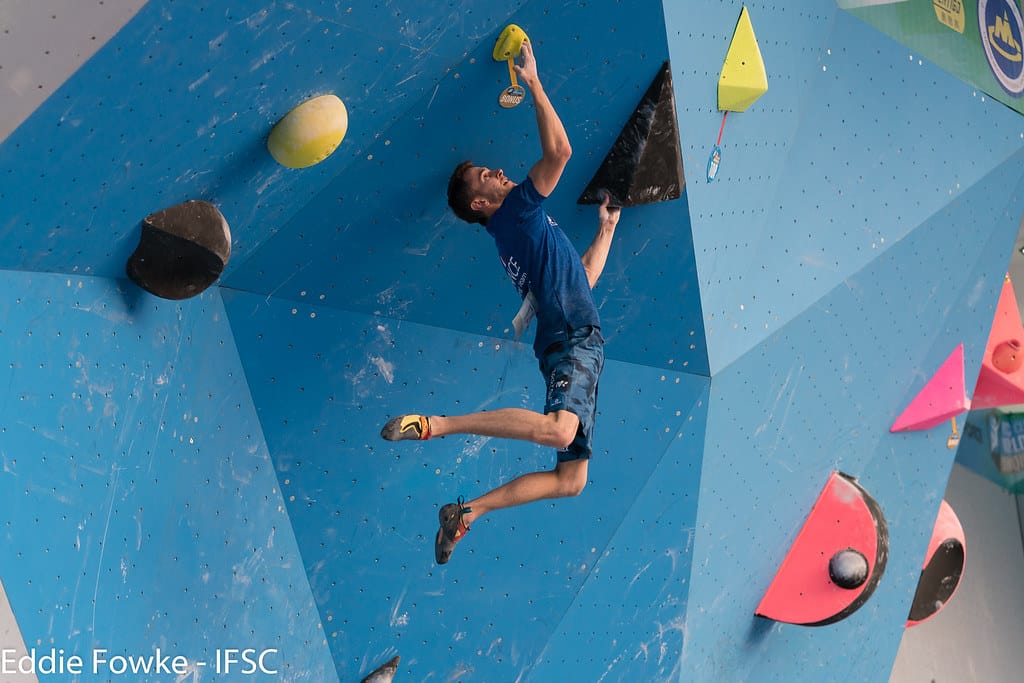

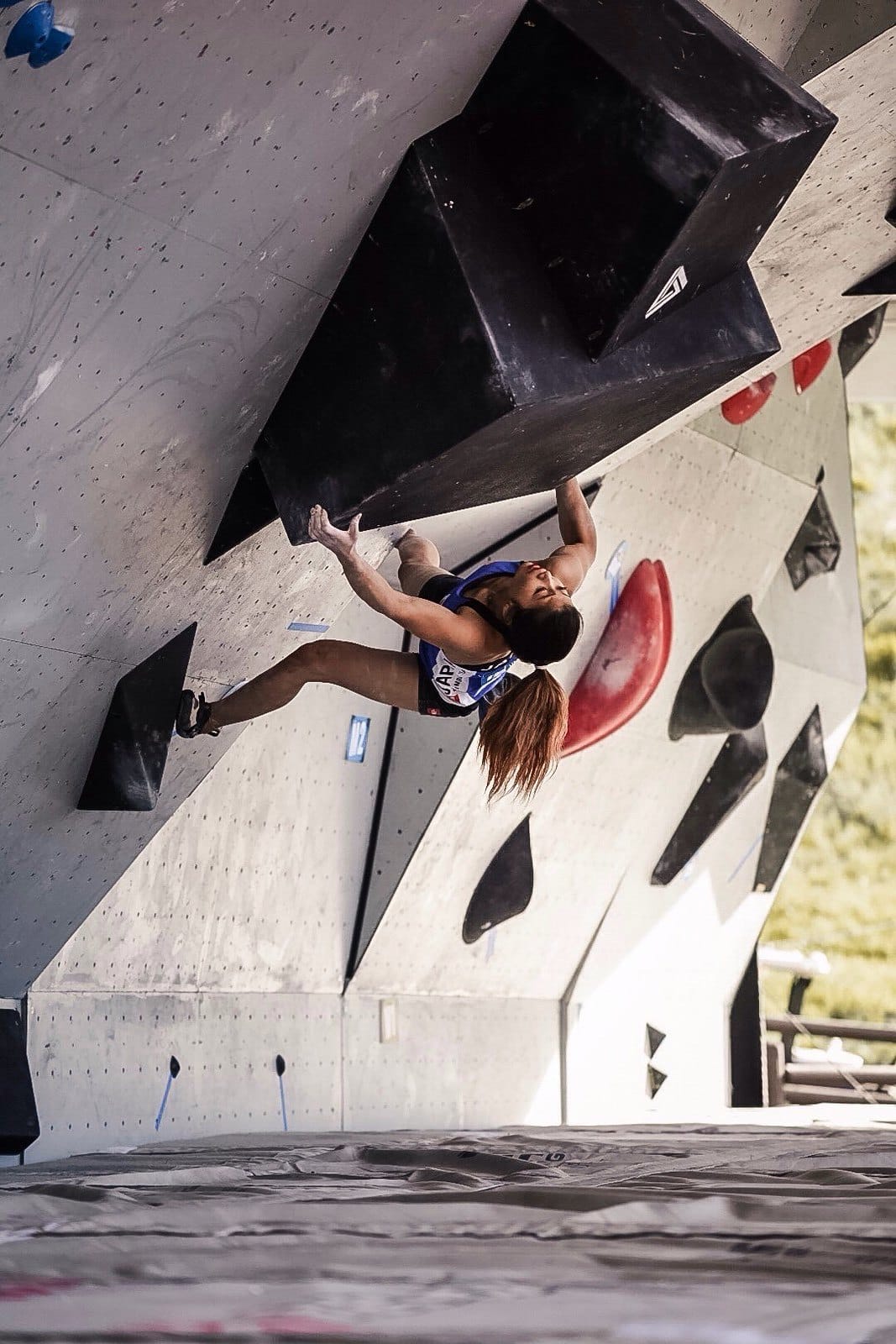
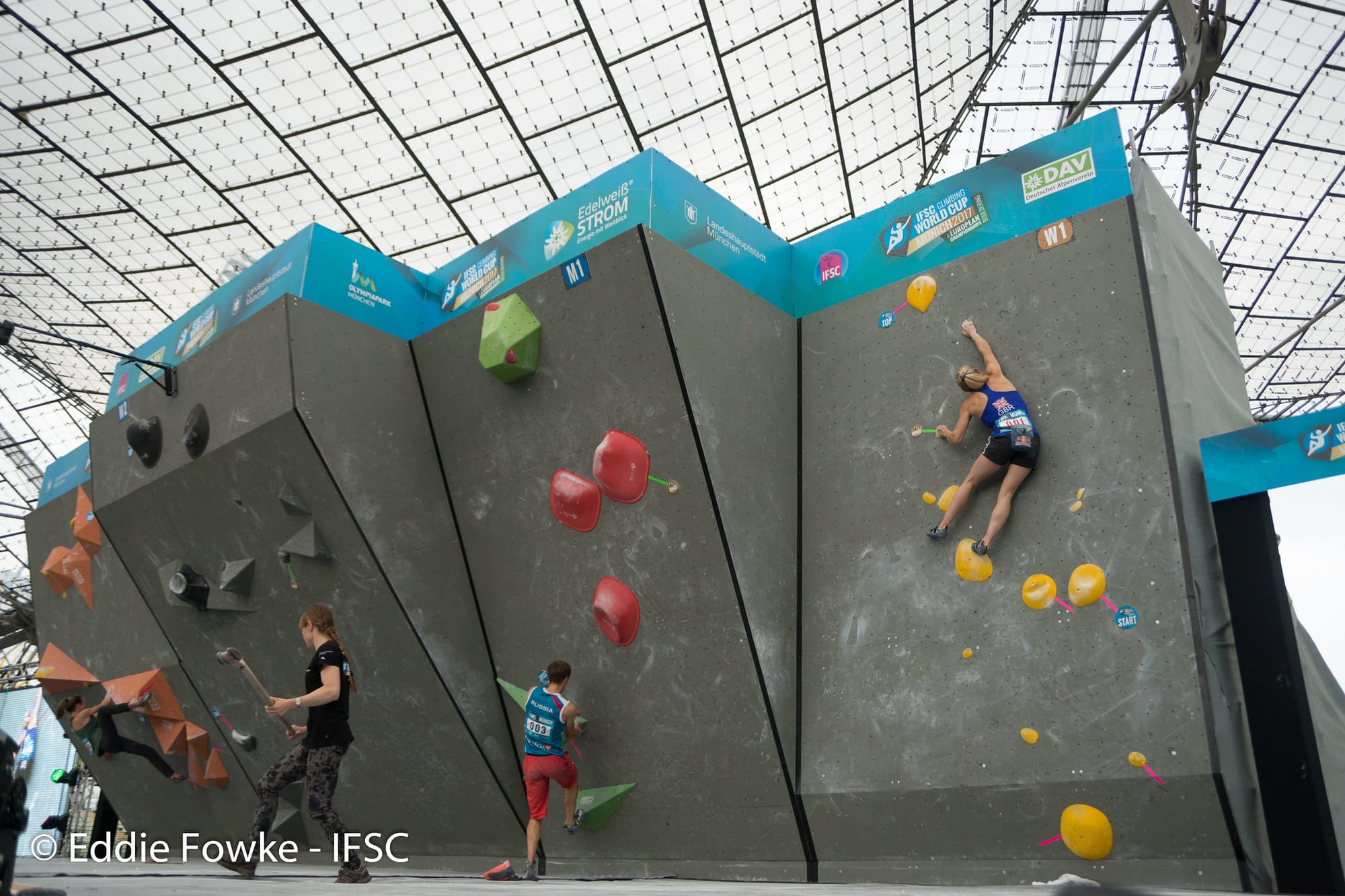
Boulders from the 2018 & 2017 Boulder World Cup © Eddie Fowkes, Andy Wickstrom / IFSC
Matias Ochoa Marcos, a coach and researcher based in Spain, had already analysed Boulder World Cup problems from 2019 to 2023, classifying them into coordination/intensity categories and tracking grip types used and the directionality of the climbs.
For last year's Boulder World Cup, we looked at combining the approaches.
How did we do it?
Matias and I collected the data together, and you can read his separate analysis along with the styles of Lead routes in 2024 (we will dig into this later).
We looked at every semifinal and final boulder from the 5 Boulder World Cups in the 2024 season using video analysis of replays of the competitions to categorise the boulders. Because the men's final in Keqiao was rained off, there were only 76 boulder problems: 40 women and 36 men.
For each boulder, we followed Augste et al and broke the climb into two sections: from start to zone, and from zone to top. This not only reflects how the problems are scored, but also how they are created. The zone is not a reward for just progressing on a problem – it is to reward solving a sub-problem within the boulder.
We then independently categorised each section and reached consensus on any disagreements.
For each of those sections, we classified five different attributes:
Wall angle — What was the wall angle the boulder problem was on? We included slab, vertical, overhang, roof, and corner.
Directionality — The direction the section went in. Did it trend right, left, or go straight up?
Hold type — What were the main hold types used in the section? We distinguished between closed-hand holds (like crimps), open-hand holds (like slopers), and pinches. When sections used a mix of holds, we focused on the hold type used in the crux, the hardest part of the section.
Section Style — We categorised climbs using the four main styles following the Olympic format
- Physical: High-intensity section where strength was the attribute tested.
- Technical: Required precise body positioning and subtle movements.
- Coordination: involving three or more hand/foot movements linked dynamically.
- Electric: powerful, coordinated moves using one or two limbs. These exist outdoors, and Defying Gravity and Shaolin are both good examples.
Dynamic type — when a climb has a dynamic movement, we noted whether it involved:
- Hands only: e.g. paddle dyno or double-clutch movement.
- Feet only: e.g. a run across volumes or a laché into a static position.
- Hand and foot: e.g. a hand and foot plant at the same time.
- Jump: A basic jump between holds
We did this even for climbs which weren't coordination-style climbs but featured a dynamic move.
We got the result data from 2024 from the IFSC Result service, including the number of tries for each boulder problem, even for athletes who did not reach the zone or top hold.
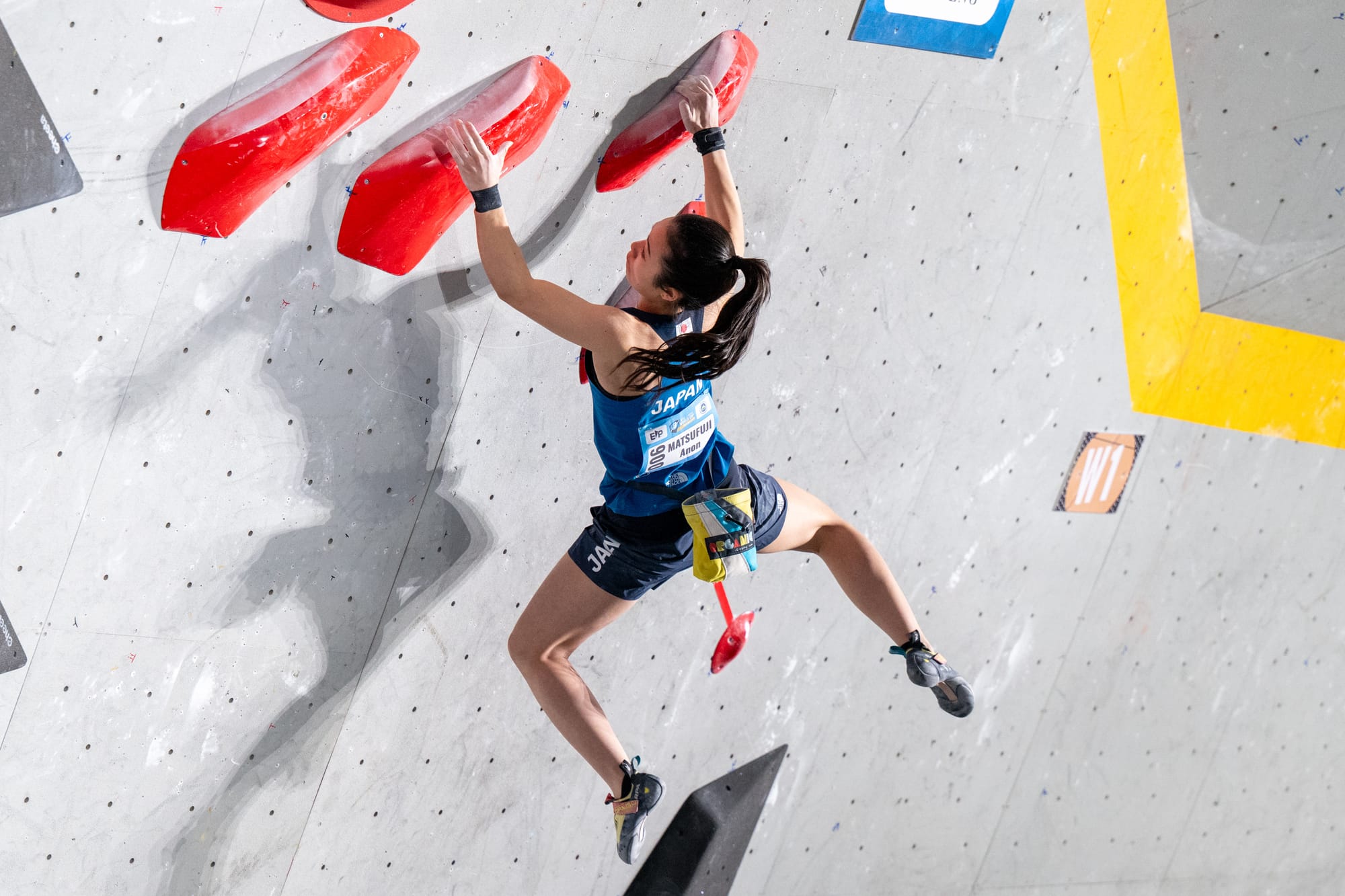
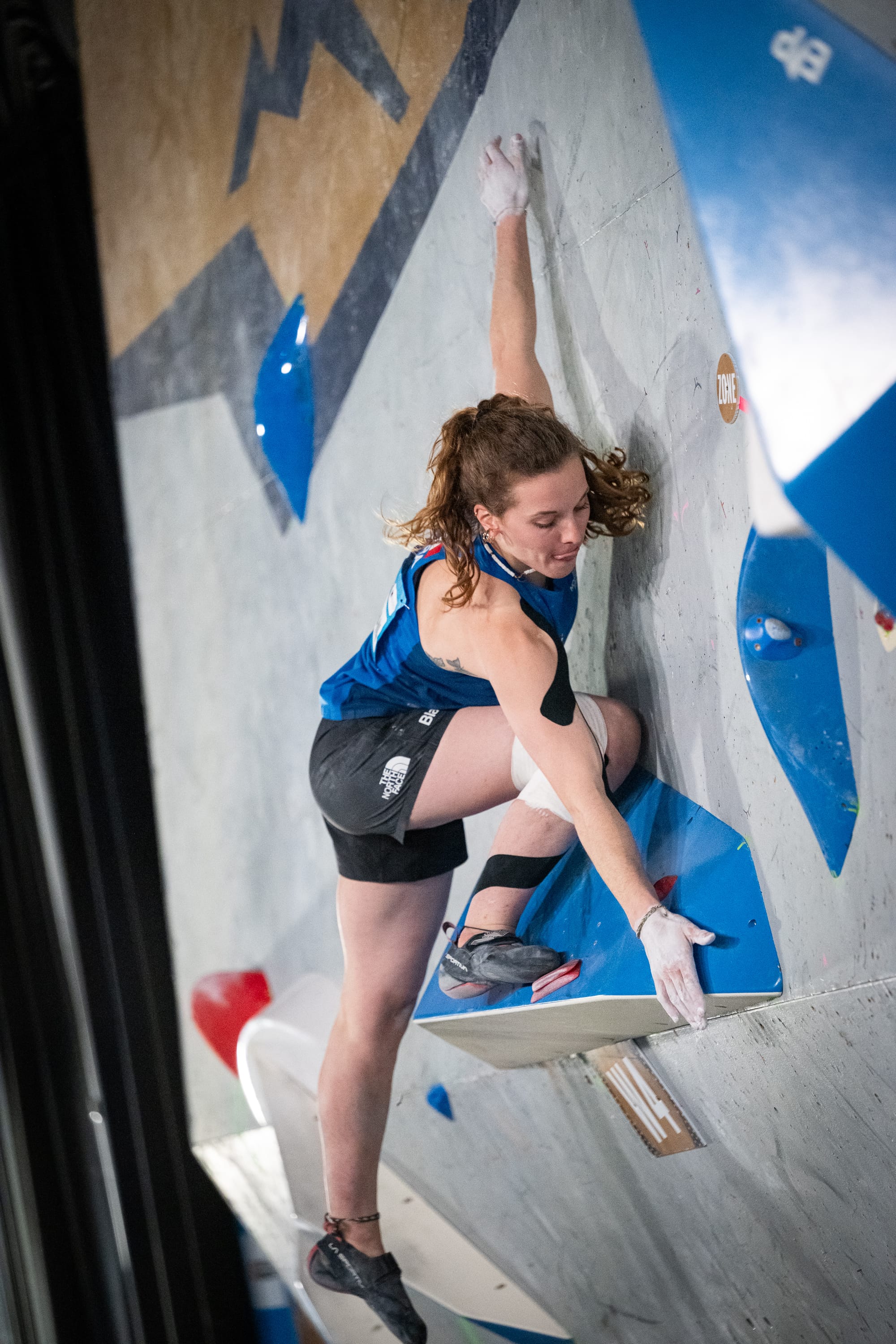
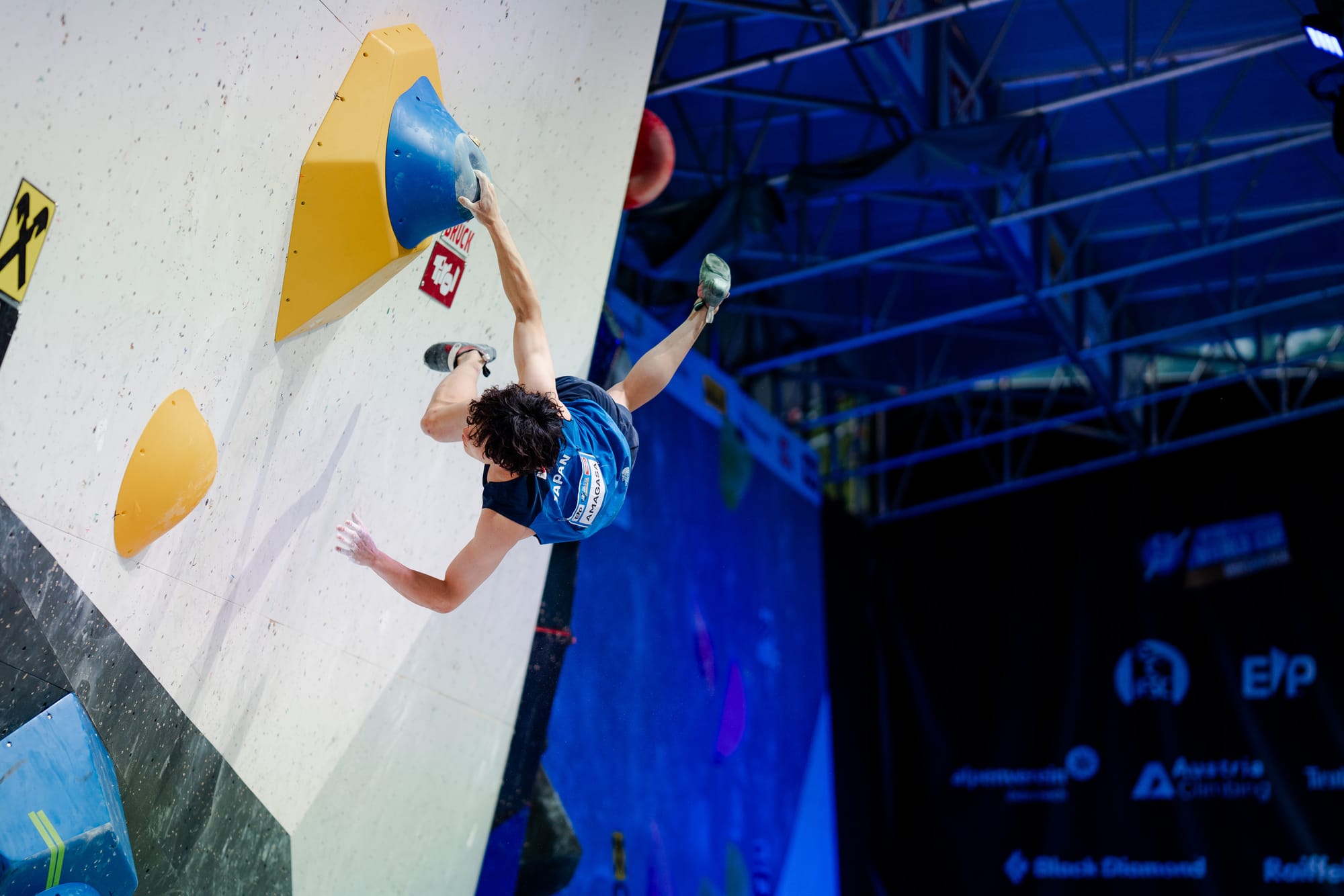

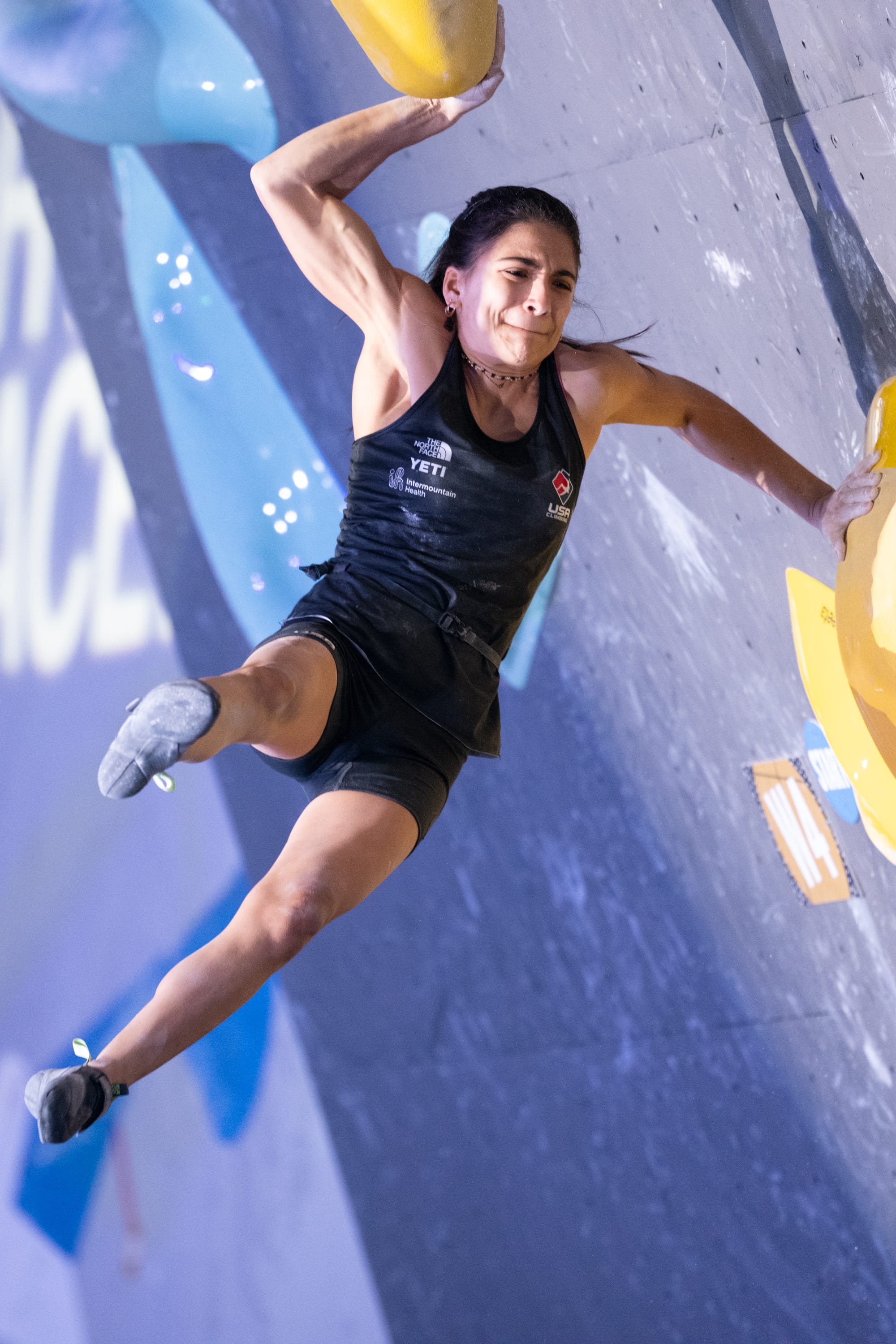
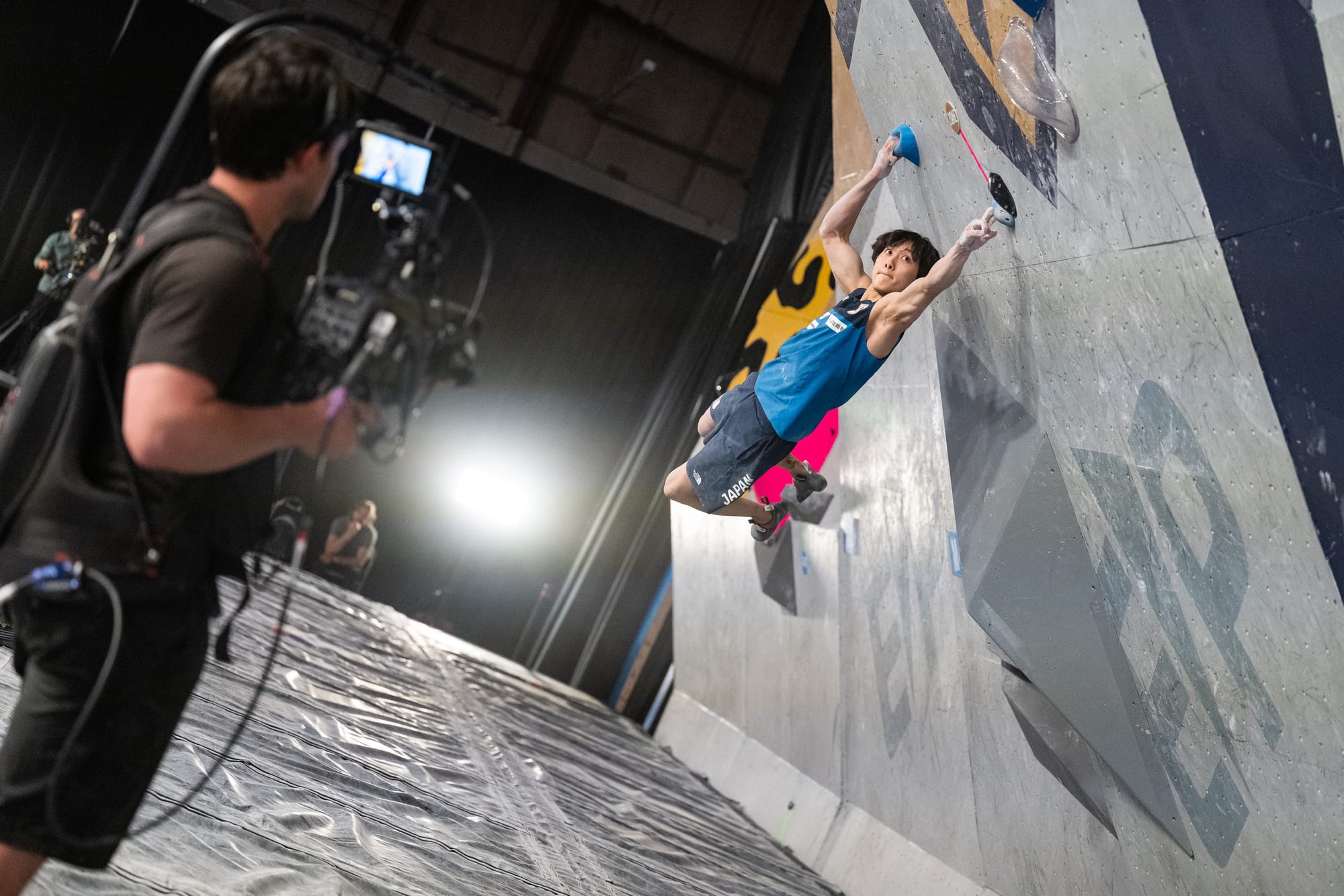
A few boulders from the 2024 Boulder World Cup season © IFSC
What else could we have done?
We didn't try to add risk-intensity-complexity (RIC) ratings that route-setters use when designing and discussing problems.
Usually the route setters use a 1-5 scale relative to the athlete's level, but this can be hard to judge from afar without knowing the level of the competitors. What may look risky may not actually be for the level of competitors.
We also only had 76 boulder problems, which is a relatively small sample size for drawing broader conclusions.
Finally, we only looked at 2024, so we can't identify longer-term trends in route setting.
What comes next?
Next, we are going to look at how often the different styles appeared in 2024, how they compare across genders, and the mix within boulder problems.
We will also explore which styles athletes were most successful in, which athletes performed best in different styles, and how the top climbers compare to others across various styles.
Finally, we'll look at whether these attributes can predict how many tops or zones a problem will get.
If you've got thoughts or questions, let me know. I will be sharing all the data and tools we used as we go, so you can reproduce our results and build on them.
News
- The Youth World Championship in Helsinki, Finland, wrapped up last Sunday. Ryusei Hamada from Japan won both Boulder and Lead in the U17 men's disciplines. Japan dominated Boulder competitions with 6 out of 12 total medals, including 3 of the 4 gold medals.
| Boulder U19 | Boulder U17 | Lead U19 | Lead U17 | Speed U19 | Speed U17 | |
|---|---|---|---|---|---|---|
| Men | 🥇 Kodai Yamada 🇯🇵 🥈 Samuel Richard 🇫🇷 🥉 Auswin Aueareechit 🇹🇭 |
🥇 Ryusei Hamada 🇯🇵 🥈 Taketo Saiki 🇯🇵 🥉 Soran Koyama 🇯🇵 |
🥇 Manato Kurashiki 🇯🇵 🥈 Lukas Mokrolusky 🇨🇿 🥉 Hareru Nagamori 🇯🇵 |
🥇 Ryusei Hamada 🇯🇵 🥈 Kazuki Nakata 🇯🇵 🥉 Jungbin Choi 🇰🇷 |
🥇 Aodhan Umlauf 🇩🇪 🥈 Francesco Ponzinibio 🇮🇹 🥉 Paco Lehmann 🇫🇷 |
🥇 Yicheng Zhao 🇨🇳 🥈 Zexuan Yu 🇨🇳 🥉 Sota Saito 🇯🇵 |
| Women | 🥇 Kaho Murakoshi 🇯🇵 🥈 Geila Macià Martín 🇪🇸 🥉 Manami Yama 🇯🇵 |
🥇 Meini Li 🇨🇳 🥈 Lucy Duncan 🇺🇸 🥉 Lou Auclair 🇫🇷 |
🥇 Geila Macià Martín 🇪🇸 🥈 Lana Goric 🇸🇮 🥉 Louise Puech Yazid 🇫🇷 |
🥇 Rafael Kazbekova 🇺🇦 🥈 Milen Casetta 🇷🇸 🥉 Arisa Hayashi 🇯🇵 |
🥇 Shixue Meng 🇨🇳 🥈 Yuting Wang 🇨🇳 🥉 Yumei Bai 🇨🇳 |
🥇 Evie Albrecht 🇺🇸 🥈 Jiaxin Tang 🇨🇳 🥉 Chunyouxuan Wang 🇨🇳 |
- The World Games 2025 in Chengdu, China, start on the 7th August but sport climbing won't feature until the 14th August. There are 3 speed climbing disciplines in the World Games: 2-lane speed (the same as the World Cup), 4-lane speed, and speed relay (teams of 2). You can watch live on the World Games website.
- The IFSC announced that Arco will host the 2026 Youth World Championship. Arco last hosted the Youth World Championship in 2019.
- The IFSC Nations Grand Finale was also announced last week. The teams are picked based on the 2024 mixed team ranking for Boulder and Lead. The competition is being held in Fukuoka, Japan, but is inaccessible by public transport. Ticket details and the format is still to be defined.
The event will also have an exhibition event for the 8 LA28 Paralympic Para Climbing classes. The event will be held at the same time as the Laval Para Climbing World Cup.
Media Recommendations
Ross Fulkerson breaks down how he worked out a couple of 360-degree coordination movements.
Another setting challenge video from Tomoa and Meichi Narasaki. This time, they are joined by Sohta Amagasa.
Akane talks with Japanese freelance routesetter Daisuke Kasahara about his setting style. He's most famous for having a unit of measurement named after him by routesetters ("move that hold 1DK") due to making very small adjustments to holds.
Stefano recaps the 2024 edition of the Arco Rockmaster competition and talks with some of the organisers (the auto-translate subtitles are quite good).
Xian is joined by Chris Luk for a session at Rise Climbing Centre (Dipi on the camera) to talk about work, life, and climbing.
Where To Buy Tickets
Koper IFSC Lead World Cup
When: 4th–6th September
Where: Slovenia
Where to buy tickets: Tickets will be made available here (the ticket link currently does not work). If you are willing to go through the Slovenia ticket seller eventim (Google Translate is quite good), if you buy a finals ticket at the moment you get a semi-final ticket for free.
Seoul IFSC World Championships
When: 20th–28th September
Where: South Korea
Where to buy tickets: Tickets will be needed for the following (all indoor events):
- Paraclimbing Finals
- Speed Qualification and Finals - Women and Men
- Lead Semi-Finals and Finals - Women and Men
- Boulder Semi-Finals and Finals - Women and Men.
All other events are free of charge. Access to the venue is limited. Entry is restricted to first-come, first-served.
Tickets for the indoor events are available through Interpark Global. The indoor rounds are held in the KSPO dome in the Olympic Park.
Nations Grand Finale 2025
When: 23rd–26th October
Where: Fukuoka, Japan
Where to buy tickets: TBD. The event is inaccessible by public transport.
Laval IFSC Paraclimbing World Cup
When: 23rd–26th October
Where: Laval, France
Where to buy tickets: You can buy tickets for the Para Climbing event and the Continental Speed event here.





